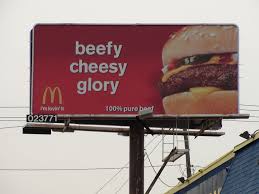
January is the month when we resolve to make changes and with it comes the assessment to go on a diet. The need to diet has a wider spread (pun intended). For 2020 and beyond, many transportation departments will be asking if it’s apt time for a road diet in their jurisdiction.
What is a road diet? It is about removing vehicles lanes from a roadway and reallocating the extra space for other uses or travelling modes, such as parking, sidewalks, bicycle lanes, transit use, turn lanes, medians or pedestrian refuge islands.
This particular definition of road-diet is from a useful compilation of case studies published by Federal Highway Administration (FHA) in 2015. There is a fresh outlook in transportation since 2015, and the road-diet is a necessary component.
2020: fresh on the scales:
Here in 2020 highlights there are new travel modes to accommodate: the roads must create safe space for scooters, skateboards, and e-bikes. We also need to carve out better pick- up and drop-off zones for ride hailing and for commercial vehicles making quick deliveries. Note that in the 2015 definition one goal was to increase curbside parking. In 2020 it is more likely that the objective will be to cut it back.
There is a quaint term in the 2015 definition called the “pedestrian refuge island.” It means that the newly landscaped or cemented median provides a landing for those on foot until the oncoming traffic clears. The metaphor of pedestrians seeking refuge from vehicles pinpoints why road-diets are so vital today, particularly as the rate of pedestrian and bicycle fatalities climb.
Retrofitting for the future:
Over the past fifteen years there has been greater attention to pedestrians and non-motorized travel when there is brand new development, but retrofitting existing infrastructure and roads has been a challenge.
When roads were built around cars and trucks the foremost consideration was speed of travel, flow of travel, and of course, safety. Still, road-diets provide even greater safety because vehicles travel at lower speeds and bicycles and other modes have safe lanes. That said, the trade-off is longer travel time and longer queues for drivers, particularly as travel lanes contract for a vehicle merge.
The second issue transportation planners must tackle is feedback and flack from local businesses. Many a bus-rapid travel project has been stalled by merchants who fear a bus-only lane will reduce parking spaces at their front door and threaten their economic viability. A road-diet is likely to raise the same concerns, but here in 2020, there are counter-points.
Grappling with Economic Vitality:
Economic vitality can increase with a higher volume of foot-traffic, bicycles, and slower modes of travel. More people will pass by storefronts and engage with them, as they are not encumbered by the inability to find a parking space. Road-diets in the U.S. may not yield European car-free, walkable cities, but they will help businesses move street-side with new-found outdoor space for seating, gatherings and signage.
There is an expression, “build it and they will come.” A road diet matches travel needs: 2018 data collected on one-way household trips show that the majority (59.4%) of vehicle trips were less than six miles. The 2020 road-diet has far reaching ability to shift travel trips out of cars and build a ‘critical mass’ for alternative modes. For the longer future, the road-diet ‘plays well’ with autonomous cars and buses since it favors lower speeds and reconfigured left and right -hand turns.
Still, it is a difficult sell for planners, politicians, and community officials who must deal with the short-term fallout from removing parking spaces and limiting traffic speeds. They may envision the needed for better street use in the Master Plan, but not in day to day operations.
Behavioral Changes Add Up
Over the past decade and longer, there have been similar objectives launched in programs like Livable Streets and Vision Zero. These initiatives are like the scaffolding for road-diets. When we choose to diet, the first step is motivation- we recognize the need to have safer streets, fewer collisions, reduce carbon-based fuels, and more personal mobility. But more than motivation is required to make a behavioral change.. Dieters know they must change habits, and eat less food. It’s about cutting back.
January, 2020 is a good time to reckon with what keeps us reaching our personal diet goals, and what keeps our infrastructure, publicly, from moving forward. Dieters know that they cannot achieve their goals overnight, but they also know that good intentions are not sufficient and do not pave the path to change.